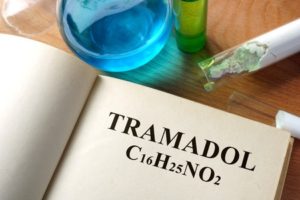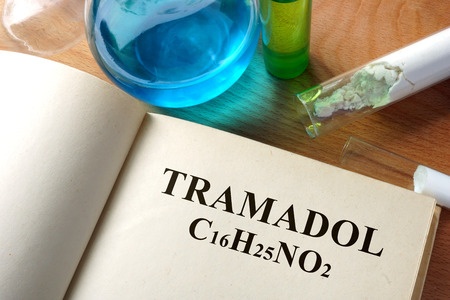
Regularly in the U.S. we hear news about the opioid epidemic. There is an ever-growing use of powerful opioids such as fentanyl, which is 50 to 100 times the strength of morphine; and carfentanyl (used as a sedative for large land animals) whose strength is 10,000 times that of morphine. CDC data released on December 30, 2016 indicated that 60.9% of the overdose deaths in 2014 involved an opioid. Between 2014 and 2015 drug overdose deaths increased by: 11.4%. The CDC suggested this increase was largely driven by synthetic opioids, most likely fentanyl, and heroin. While the opioid epidemic is not uniquely a US problem, it has a different face in other countries, such as Egypt, where the opioid of choice for abusers is tramadol. Yes tramadol, which is one-tenth the potency of morphine.
The Economist said tramadol use in Egypt was everywhere. Taxi drivers used them to stay awake. Wedding guests receive them as token gifts. Petty government officials even accept them as bribes. “Tramadol has become Egypt’s favourite recreational drug, supplanting heroin and cannabis.” Taha, a bank teller, said the drug helps him work. “It just makes you feel relaxed. Even if there are two men fighting to the death beside you, you wouldn’t care.”
There is no social stigma attached to tramadol use. It’s seemingly more religiously acceptable than alcohol or marijuana. Ibrahim began using half a tablet of tramadol because he felt socially awkward at the age of seven. “I found myself feeling unusually outgoing and positive.” Ten years later, he was using ten tablets daily.
Until recently, tramadol sold for the equivalent of 15 to 30 cents per pill. Tramadol use accelerated after the 2011 uprising in Egypt, partly because of the weakened state controls. Ehab El-Kharrat, an Egyptian doctor, said the tramadol came largely from India or China. Customs inspections began to tighten and the price rose sharply. At one point the price reached $1 to $3 a pill. “Since then we have seen a flood of people seeking help.” The head of a Cairo rehabilitation center said at least 40% of those attending his clinic are addicted to tramadol.
Yet enforcement is poor. Court cases are thrown out because of shoddy police work. Officers are often in cahoots with the drug dealers, or are themselves drug-users. And even if the government succeeds in restricting the supply of tramadol, there may be unintended consequences. If the pills become more expensive, users may switch to stronger heroin. Some worry that the worst of Egypt’s drug problem is yet to come.
The Daily Beast also reported on the tramadol problem in Egypt. A taxi driver threw up the first time he tried tramadol. But now he takes four or five doses daily. He justified his use by saying its one of the few ways to dull the pain of Egypt’s weak economy and trying political circumstances. “Food, gas, everything is so expensive. People are exhausted and take things like tramadol just to keep going.” Young cash strapped males form the core of its users.
A UNODC (United Nations Office on Drug and Crime) official estimated that 90% of the illicit tramadol in Egypt is produced in India, and then smuggled into the country. One supplier said it’s never been easier to keep stocked up on tramadol. Because of its ready availability, its use has begun to spread from younger working class males into the more affluent areas of Cairo, which doesn’t make drug dealers very happy. “It’s not good when [those] people buy tramadol, because it means they won’t buy more expensive things. . . But with the economy and everything, this seems to be what Egyptians want right now.”
The Expert Committee on Drug Dependence of the World Health Organization (WHO) gave an Updated Review Report on tramadol at its thirty-sixth meeting in June of 2014. The report noted how Egypt had up-scheduled tramadol in 2009 because of its increasing rate of abuse. There was also growing evidence of tramadol abuse in other African and West Asian countries, including: Egypt, Gaza, Jordan, Lebanon, Libya, Mauritius, Saudi Arabia and Togo. In most countries it is a prescription-only medicine.
Marketing authorizations for tramadol are held by dozens of companies. The WHO Report listed around thirty-five companies as examples. Corresponding to this, it also goes by dozens of trade names, literally from A (i.e., Acerna, Amanda, or Astradol) to Z (i.e., Zamadol, Zentra, or Zodol). The common formulas in the US are: ConZip, Ryzolt and Ultram.
Overall, tramadol has been seen as having a low potential for drug dependence. However, in the last few years, new data suggests that dependence may occur when it is used daily for more than a few weeks or months. The WHO finding here is consistent with the above reported abuse of Tramadol in Egypt. It is listed as a controlled or scheduled substance in several countries, including: Australia, Iran, Sweden, Venezuela, Ukraine, China, the United Kingdom, Jordan, Saudi Arabia, and Egypt. Since the WHO Report was published, tramadol has become a Schedule IV controlled substance in the U.S.
In summary, the data on the dependence potential of tramadol show that tramadol has a relatively low dependence potential and that dependence is associated with the use of tramadol over an extended period of time (more than a few weeks to months). The data also show a higher risk profile in former drug abusers and in medical staff personnel than in pain patients. Several studies indicate that the incidence of tramadol dependence may differ between countries and within different regions of countries, which may be associated with the availability and prescription practice for tramadol, and with the availability of alternative psychoactive substances for drug abusers.
DrugAbuse.com described tramadol as a fully synthetic opioid originally synthesized by a German company in 1962. It was finally brought to market as Tramal in 1977. It was not until 1995 that it became available in the U.S. as “Ultram.” Initially it was not a controlled substance. By 1996 the FDA revised the product label to require warnings about the potential for abuse. In 2009, the FDA again changed the product warning, now the alert of the possibility of a life-threatening condition, serotonin syndrome.
Between 2005 and 2011, emergency department visits related to non-medical tramadol use rose over 250%. Between 2008 and 2013, prescriptions for tramadol increased by 20 million. In 2014 another increase of 44 million prescriptions of tramadol occurred, possibly a reaction to the rescheduling of Vicodin from Schedule III to Schedule II. Also in 2014, tramadol was made a Schedule IV controlled substances by the DEA.
In 2009, Sansone and Sansone gave a good summary of some of the health risks with tramadol, including a description of serotonin syndrome (SS), and the risk of seizures if it was used concurrently with antidepressants, both tricyclics and SSRIs. There was a “Dear Healthcare Professional” letter distributed by the manufacturer warning of the potential adverse drug event of seizures when using tramadol and antidepressants. A follow up study noted a small and insignificant change in the prescribing habits after the release of the warning letter.
Serotonin syndrome was more common with excessive use/overdose of tramadol or coadministration with other medications, particularly antidepressants among the elderly. SS has been reported with combinations of tramadol and the following: fluoxetine (Prozac), sertraline (Zoloft), paroxetine (Paxil), citalopram (Celexa), fluvoxamine (Luvox), venlafaxine (Effexor), and TCAs (tricyclics). Rimeron was implicated in one case study of tramadol use with elderly residents in a long-term care facility. They summarized their conclusions as follows:
In primary care settings, tramadol is a commonly prescribed synthetic analgesic. Two potential adverse reactions of tramadol are seizures and SS. Either of these reactions may occur with tramadol monotherapy, but both appear to be much more common with either abuse/overdose or in combination with other drugs, particularly antidepressants. These adverse reactions appear to be more common in the elderly. The majority of commonly prescribed antidepressants have been implicated in both of these adverse reactions. Clinicians are advised to be mindful of these potential adverse sequelae when prescribing antidepressants to patients on tramadol, particularly in the elderly and/or those who might be at a heightened risk (i.e., individuals with epilepsy, head injuries, neurological dysfunction). If coadministration is undertaken, we advise careful monitoring for these two particular hazards. Tramadol is a remarkable drug, but like all drugs, effective use entails balancing the benefits versus the risks.
Then on April 20, 2017, the FDA restricted the use of tramadol (and codeine) in children. They also recommended against the use of these medicines in breastfeeding mothers. Tramadol is contraindicated (the FDA’s strongest warning) to treat pain in children younger than 12 years old and for pain in children younger than 18 after surgery to remove tonsils and/or adenoids. “These medicines carry serious risks, including slowed or difficult breathing and death, which appear to be a greater risk in children younger than 12 years, and should not be used in these children.”





